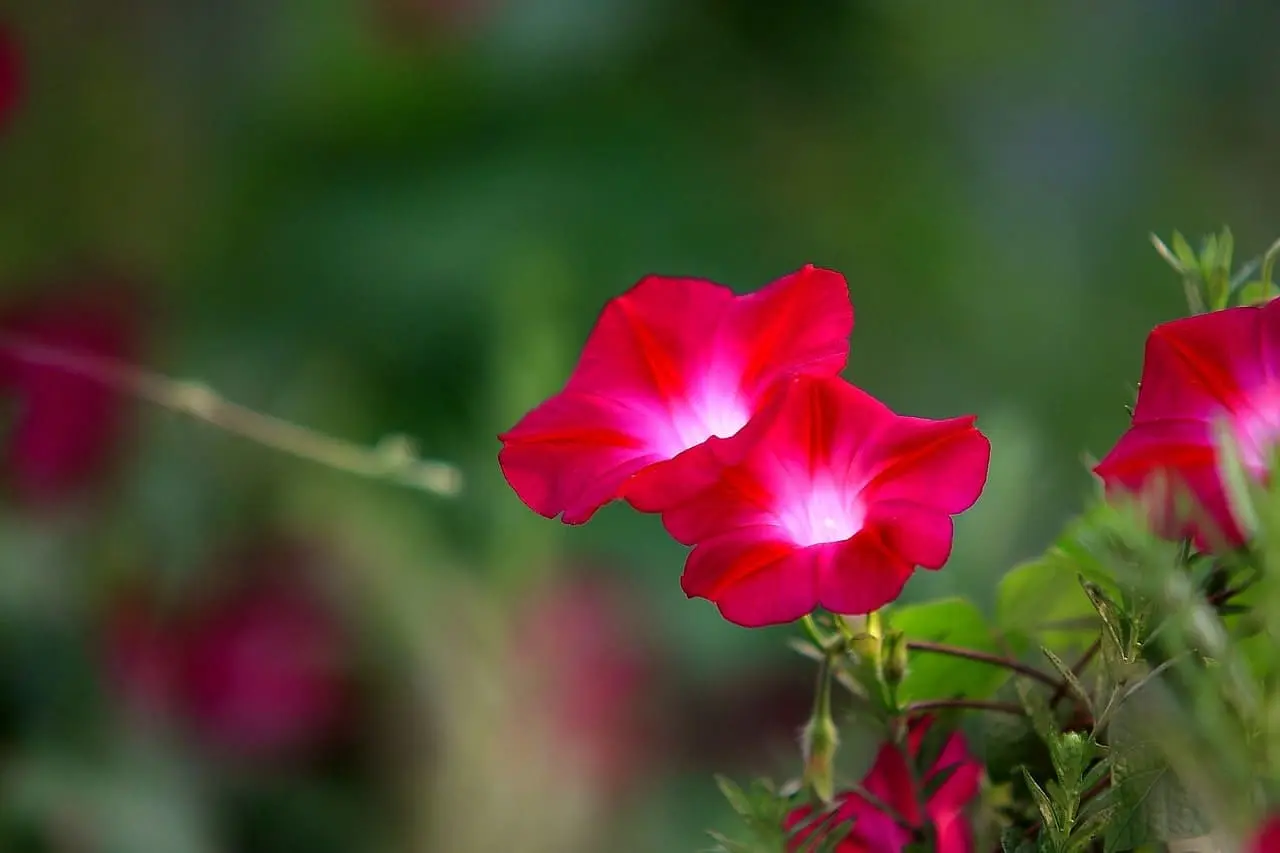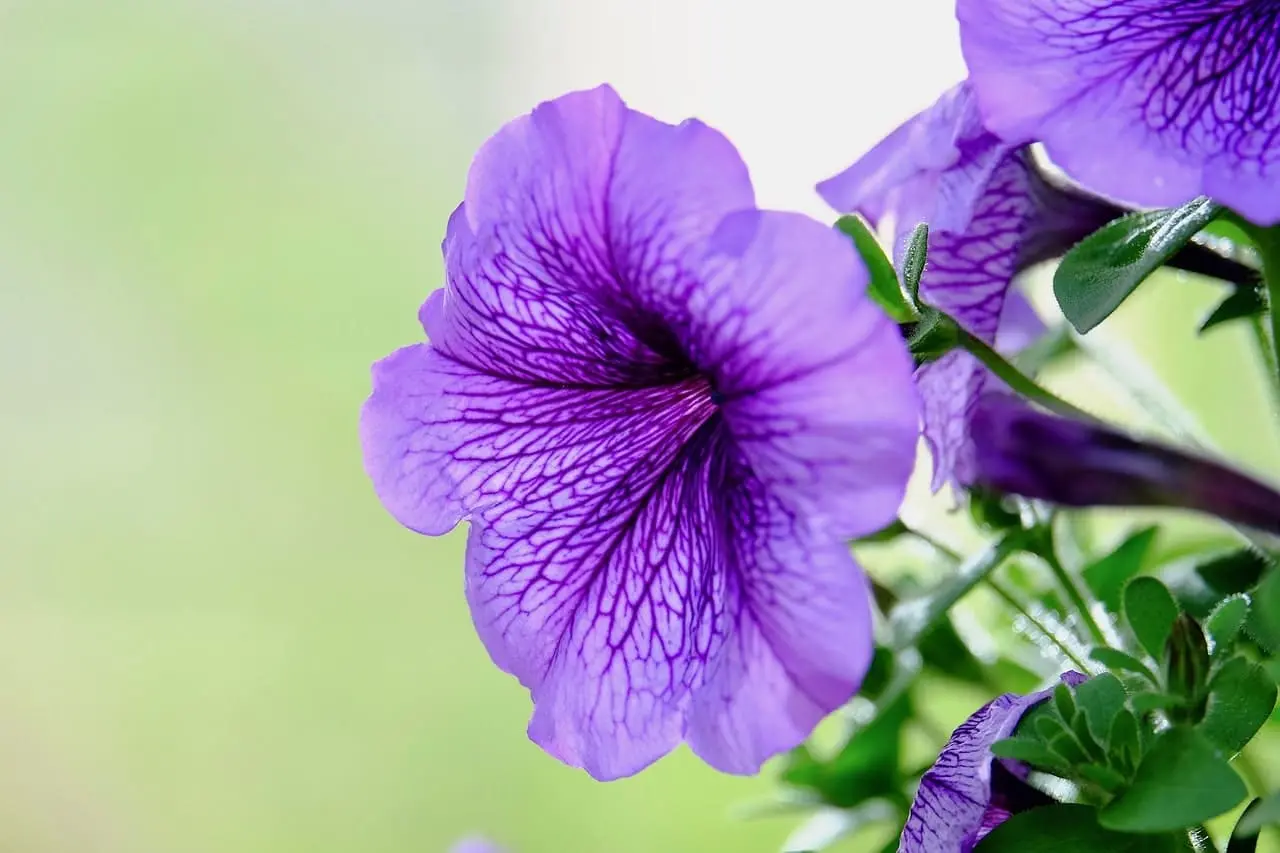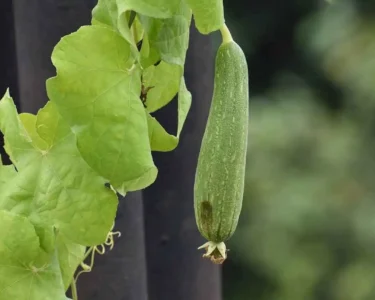Morning glory seeds, known for their beauty and colorful flowers, are source of human interest for centuries. They belong to the Convolvulaceae family. Morning glories are various species of the plants, which belong to the genus *Ipomoea*, that possess magnificent flowers and highly adaptable to any climate and soil condition.
The term “morning glory” can refer to several different things:
- Flower: Morning glory is derived from a family of flowering plants also referred to as Convolvulaceous plants, and their number exceeds one thousand. It’s amazing to note that these flowers only bloom in the morning with signs of fading as the day goes on.
- Phenomenon: The phrase ‘morning glory’ has another meaning that is related to a weather phenomenon, a specific kind of cloud formation called the ‘morning glory cloud’. This phenomenon happens in the Gulf of Carpentaria in Northern Australia. It is a roll cloud that can cover a range of hundreds of kilometers and is normally associated with strong winds and quick fluctuations in barometric pressure.
Morning Glory Types:
There are so many varieties of morning glory plants that can be grown in areas which are appropriate with different climatic conditions and environment and those plants have different sizes and appearances as well. Here are some popular types:
- Ipomoea tricolor: It is better known by its other nickname, Heavenly Blue, and it is considered one of the most popular type of morning glory. It has impressively large blue flowers with white throats.


- Ipomoea purpurea: The Common Morning Glory or Grandpa Ott’s have luminous purple-blue flowers with a center tinge that is reddish-purple.
- Ipomoea quamoclit: It is also referred to as “Cypress Vine,” and it has finely textured and nicely cut leaves and brilliant red or pink tubular flowers. This pride of the garden draws the hummingbirds.


- Ipomoea coccinea: Known the ‘Red Morning Glory’ or ‘Star Ipomoea’. This type blooms bright red flowers with white stars.
- Ipomoea muricata: Often called the ‘Purple Heart’. It has heart-shaped leaves with a purple hue on the bottom side and blooms with lavender or purple blooms.
And these are just some of the many morning glory plants that one might recognize today. These comprise different growing patterns, size, colors of flowers as well as sizes making it easily adopted in many gardens and landscapes across the globe.
How to Grow Morning Glory from Seeds:
Growing morning glory or any plants in the genus *Ipomoea* is easy if you want to grow them for their flowers and beauty or if you just want to learn about the varieties of flowering plants.
Materials Needed:
- Morning glory seeds
- Topsoil, growing mix, potting mix, or potting compost
- Pots or containers – if starting from seeds while growing indoors.
- Climbing Structure for climbers type
- Sprinkler or any item used for pouring water.
- Fertilizer (optional)
- Garden trowel or shovel
Steps to Grow Morning Glory from Seed:
1. Seed Preparation:
– Morning glory seeds possess a hard seedcoat. Scarification (Seed coat should be lightly damaged or scratched) or soaking in water for several hours (preferably for a night before being planted.) can be helpful for seed germination. Some experienced gardeners gently rub the seed coat using sand paper in order to enhance water uptake.
2. Choosing a Location:
– Morning glories prefer planting area with full exposure to sunlight. So, one has to ensure that they are exposed to sunlight for about 6- 8 hours daily. For those that are grown in pots or containers, make sure they can be moved to a location with full sun.
3. Soil Preparation:
– Few things are recommended during soil preparation:
- a) Completely removing weeds and rocks that may hinder the growth of roots.
- b) Loosening the soil to a depth between 6 to 8 inches (15-20 cm.
- c) Make sure your soil is well-drained, though morning glories are known for being tolerant to different growing conditions.
- d) You can also add small amount of fertilizers (optional).
4. How to plant morning glory seeds:
– Morning glory seeds should be planted in the spring or when the soil has warmed up.
a) Planting indoors: Fill the pots or container with potting soil. Sow the seeds slightly below the surface of the soil, about 1/4 inch deep, or 6 mm. Water gently.
b) Planting outdoors: Seeds should be planted directly into the gentle soil (once the risk of frost has minimized and the soil has warmed up). Sow seeds approximately 6 to 12 inches (15 to 30 centimeters) apart to allow space for adequate growth.
5. Watering:
– Check the moisture level of the soil and water the plants regularly, but do not over water especially when they are germinating. Water it with a light sprinkle to avoid removal of seeds or young plants from the soil.
– These vines are moderately tolerant of drought once they are established, although they prefer frequent watering especially in warm zones.
6. Germination:
– It takes 1-2 weeks normally for the seeds to germinate while, on some conditions such as temperature and soil moisture, it may extend to some weeks.
7. Support for Climbing Varieties:
– Morning glories are climbing plants, and they should be transplanted into a structure to give the plant support it needs such as a fence or trellis.
8. Maintenance:
– Learn how to train morning glory by demonstrating how to hold the string or twig as it grows in the morning to encourage it to twine around the support.
– Weed out plants incessantly to minimize competition for rainfall and foods with other plants in that particular area.
– Watch out for pests like aphids or spider mite and control using soap spray or any other control method applicable to the crop in question.
9. Harvesting Seeds (optional):
– If you wish to collect seeds, so that, you can sow them during the future planting season, some flowers must be allowed to wither and produce seeds. To grow these plants, collect the fruits and harvest the beans when the pods are dry and turning brownish and split open. While using them, get rid of the seeds by collecting them in a cool, dry place for the next planting session.
Tips for Success:
- Timing: Sow the seeds of morning glory after the last frost period in your region if you want it to grow effectively.
- Germination: Seeds generally sprout after one to two weeks under favorable conditions but they may take rather longer if environmental conditions are poor especially when the temperature is low.
- Thinning: Should there be germination of more than one seedling in a given area, it is recommended that they should be thinned in order to give space for growth of their stems and ability to ascend.
- Deadheading: Elimination of dead ones which can lead to re blooming throughout the season.
If you are careful enough and follow the instructions, you will be in a position to increase the chances of germinating morning glory seed and as a result enjoy the beautiful flowers throughout the growing season.
Research on Morning Glory Seeds with References (Uses)


1.Taxonomy and Distribution
There are more than 500 species of Convolvulaceae family across the globe. They are mainly found in the states that are characterized by tropical and sub-tropical climates but also grow in temperate states. They include climbing plants right from vines, shrubs, and herbaceous plants that differ concerning other growth prospects and ecological practices (Acevedo-Rodríguez et al., 2019).
2. Historical Significance
– People have a culture or tradition associated with morning glory in different societies. In the regions of Mesoamerica, several species are used in religious and ritual practices due to their psychoactive effects (Ratsch, 2005).
3. Psychoactive Uses
– Some species of morning glories contain psychoactive substances, ergine (LSA), which has hallucinogenic effect, once consumed with the right amount of portions. This has led to their historical use in spiritual practices and rituals (Schultes & Hofmann, 1979).
4. Medicinal Properties
a) Medicinal Uses
– The species involved in the morning glory have been employed in past traditional medical techniques for curing ailments such as the headaches and as diuretics. Yet today, the proof of its efficacy in these positions isn’t very strong (Acevedo-Rodríguez et al. , 2019).
-It is used in treatment of heart disease, diabetes and headache.
b) Ecological Role
– Normally, this growth behaviour is not deemed as invasive; however known species of these morning glories can become naturalized in extraneous settings, and may pose a risk of crowding out indigenous plants (Holm et al. , 1997).
– In a broader sense, the conservation approach deals with measures that aim at estimating effects on ecosystems due to invasions by the species in question, as well as controlling their expansion to habitats they did not originally inhabit (Mabberley, 2008).
5. Modern Research and Future Directions
a) Scientific Advances
– Recent studies concern regarding the genetic variation, chemical content, and pharmacological uses of morning glories with reference to their biologically active constituents and their possible function in the field of medicine and agriculture (Aboagye et al. , 2020).
– Recent developments in aspects of biotechnology and molecular biology contribute to clarifying the characteristics of morning glory species and the ability to exist under changing climate conditions (Acevedo-Rodríguez et al. , 2019).
Conclusion
Morning glories are remarkable plants that can be considered as the plants that have cultural, medicinal, and even ecological values for people. Only through playing their proper roles as conserving and sustainable using these animals, people will turn to science to do better jobs in the future. We as gardeners can use morning glory seeds and grow them into beautiful flowers.
References:
- Acevedo-Rodríguez, P., Strong, M. T., & Ocampo, G. (2019). *Flora of Panama: Convolvulaceae*. Smithsonian Institution Scholarly Press. (1)
- Ratsch, C. (2005). *The Encyclopedia of Psychoactive Plants: Ethnopharmacology and Its Applications*. Park Street Press. (2)
- Schultes, R. E., & Hofmann, A. (1979). *Plants of the Gods: Origins of Hallucinogenic Use*. (pdf),(hardcover)
- Mabberley, D. J. (2008). *Mabberley’s Plant-Book: A Portable Dictionary of Plants, Their Classification and Uses*. Cambridge University Press. (4)
- Aboagye, F. A., Danso-Boateng, E., Anning, A. K., Amoatey, H. M., & Mensah, K. B. (2020). Phytochemical, pharmacological and toxicological potential of *Ipomoea* species: A review. *Journal of Ethnopharmacology, 252*, 112531.
Morning Glory Seeds for Sale
If you want to purchase morning glory seeds, here are few ways where you can buy these seeds:
Online Retailers: Amazon, etsy are the online retailers where you can buy them.
Local Gardens and Nurseries: Morning glory is a very popular choice for gardeners. So, you can find their seeds in gardens and nurseries in your area.
FAQs
When to plant morning glory seeds or best time to plant these seeds?
Best time to plant morning seed is spring or when the soil has warmed up in the area you want to plant. This condition can also be induced artificially.
Is morning glory poisonous?
Morning glory flowers are not poisonous and are edible. They are also used to treat various headaches, heart disease and diabetes. But morning glory seeds are poisonous if ingested in large quantity. So, make sure to keep them out of childrens reach.





